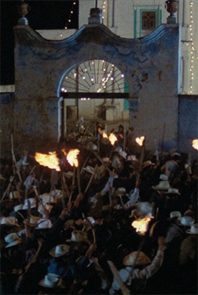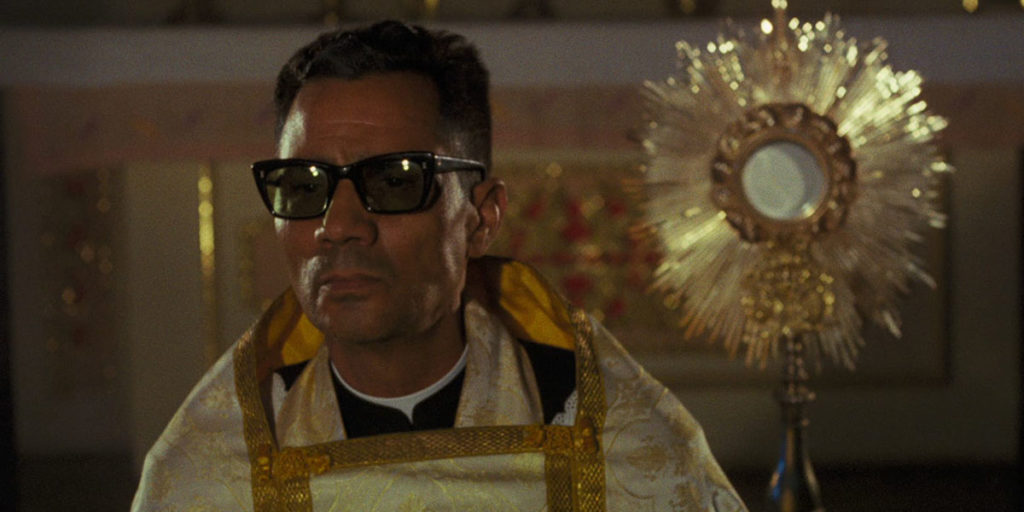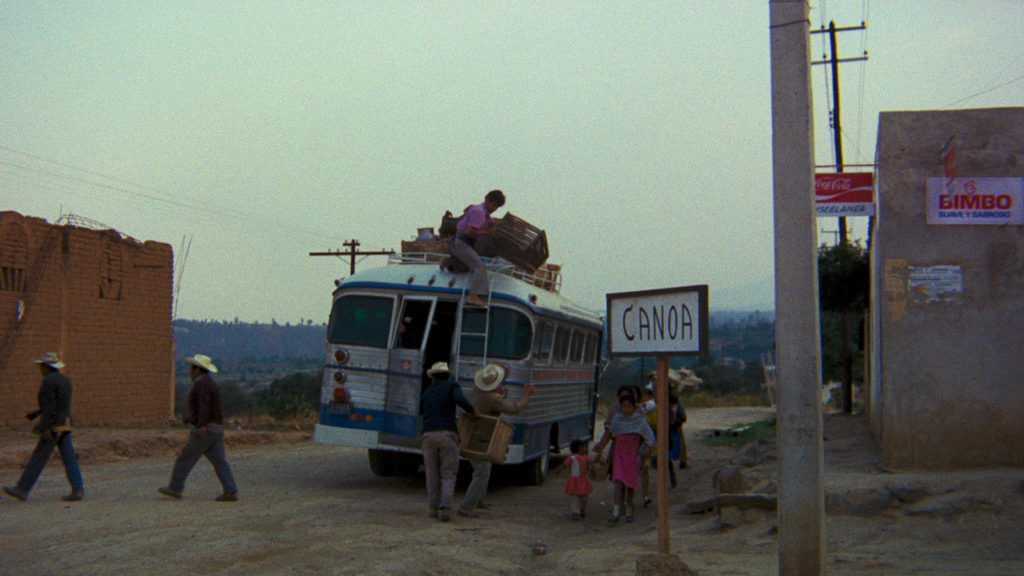
As I previously wrote, Sui generis is partly Guillermo del Toro’s brainchild. This retrospective uses cinema as documents, showing nuances of otherwise better moments in Mexico’s history. But like most histories, there are moments that are purely dark. One of those moments is the Canoa massacre in 1968, immortalized in cinema by Felipe Cazals in Canoa in 1976. This film hit Mexican cinemas and ingrained itself into the minds of del Toro and his best friend Alfonso Cuaron. Their love for this film got it a Criterion release. Through this program, del Toro also gave this for Toronton to see. It’s better late than never for us. Besides, we can learn a lot about a film depicting events from the 1960s. Mass hysteria against atheism and communism swept the titular town. And that reminds us of the ideological brainwashing happening in parts of the world today.
Canoa opens us up the Mexico’s political landscape, one that the rest of the world still knows nothing about. Canada and the United States have short periods of conservative and liberal dominance. And that relationship has become more antagonistic as time passes. A short Wikipedia search on Mexican history would show the dominance of a revolutionary centrist party, which is inherently suspicious. But there are other forces on sides that we here see as extreme. On the right are the the Catholic Church, with clergy members who entrenched themselves in towns like in Canoa. On the left are the student protests. They soft sold their politics to young people. Some of them included the university employees who we see on the film. There are also the local townspeople who don’t ally themselves with any political views. But they believe in what they think is fair.

This film could have been just another cautionary tale for urban kids not to go to small towns. And in a way, it begins with their perspective. It shows short segments of police marches in Puebla’s streets. Then it shows the five university employees who end up dead in the small town. It eventually goes into a deep dive into Canoa. Every piece of information about the town goes into consideration. These facts cover the gamut, especially the remnants of the Aztec culture that manifests itself in Canoa. This becomes important as of the characters, which the movie calls The Witness (Salvador Sanchez). He recalls the Cortes period, comparing the oppression during that era with the complacency in his time. The Aztec culture’s existence also reminds us of how the Spanish violently tried to wipe them out. And that violence is an inherent force in this continent.
But the important tidbits are ones concerning the economy, especially the lack of employment opportunities there. The lack of employment makes it more difficult for the citizens to cover their expenses. The film doesn’t necessarily outline some things. Like whether or not the fees that local Priest (Enrique Lucero) is asking for is outside taxes. But the fact that the townspeople have to pay him is fishy. The Priest also makes it seem that he’s playing fair. That the people who don’t pay for some services don’t get them. But these are essential services that he’s withholding. And he withholds them arbitrarily against people who, in his opinion, oppose his political views. He’s practicing the same unilateral dominance that the Revolutionary Party did. The film shows us characters who actually oppose him. They’re only able to speak out when they think no one else is listening.
The film makes all of this information captivating, but I suppose all this information is inherently interesting anyway. And from that omniscient narrator, the film then hands us over to the Witness. He seems to be the only sane person in town. His existence proves the new adage that there are cool people everywhere, even in xenophobic small towns like Canoa. His voice might otherwise be drowning under more hysterical ones, but the camera focuses on him. Sanchez incorporates a smirk and cynicism to his voice. Here he shows that the Witness is more of a survivor than a victim. These are good qualities in a film that allows the Witness and the other characters to break the fourth wall.
And there’s an inherent intimacy here that it earns, as the Witness tells us opinions that he probably shouldn’t have. The conversation between the Witness and us reflects necessary conversations. Ones that Mexicans needed to have after the violence that erupted both in Canoa and throughout their country. Canoa came out in their local theaters almost a decade after these events took place. The film itself received government funding. Cazals wanted to criticize the government but wanted to do so without compromising his own safety. His safety as an artist was still in question even in the 70s.

Mexico was living through new decade with a new, freer president. That new president is still a member of the same political party. And like most revolutionary forces, that party doesn’t want others to hear any dissident voices. That contradiction coincides with one where Canoa, a film that’s maybe about healing, is about watching young people bleed. In order to heal, a country has to say at least the names of both the victims and their victimizers. So like any artist with a conscience he laced his film with symbolism. The government was still a minor villain. But he chose the church and one of its corrupt Priests as a bigger villain.
That’s still risky today when some societies still turn a blind eye against the Church’s atrocities. The film eventually lets the Priest talk. And of course, he dissociates himself from the xenophobic panic that he himself caused. Watching him probably fulfills expectations of a politically aware audience who knows that the Church is corrupt. But it also still shows the violence unfold against innocent, wide eyed, young people. There’s still that sadness that comes when other people pervert certain beliefs. Showing the priest turn those university employees away hurts. The film, strangely enough, reminds us of what Christianity is about by showing people who practice the opposite.

